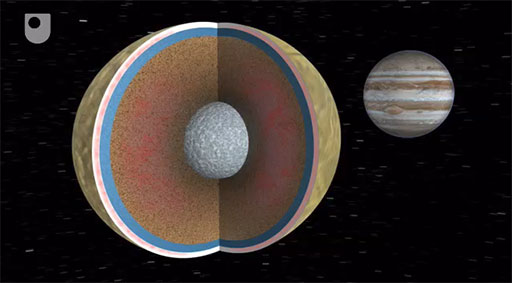3.11 Tidal effects on Io and Europa
Tides play a great role in the geology of Jupiter’s moons Io and Europa, which are geologically active at present, due to continual stretching of their interiors.
Europa, the second-closest Galilean moon to Jupiter, has a scarred icy surface as a result of tidal forces stressing the surface. The tidal heating effect warms the moon’s interior, which keeps the interior water (blue layer above) in a liquid state.
Tidal forces don’t just affect water; they can distort any elastic material. The strong tidal effect from Jupiter on its closest moon Io causes volcanic activity, continually re-surfacing it. Io, Europa and Ganymede line up periodically as they travel round their orbits: this is known as orbital resonance. So for every orbit of Ganymede, Europa would have orbited twice, and Io would have orbited four times. This orbital resonance prevents any orbit becoming circular, and allows tidal heating to continue. With over 400 active volcanoes, Io is the most geologically active body in the Solar System.

